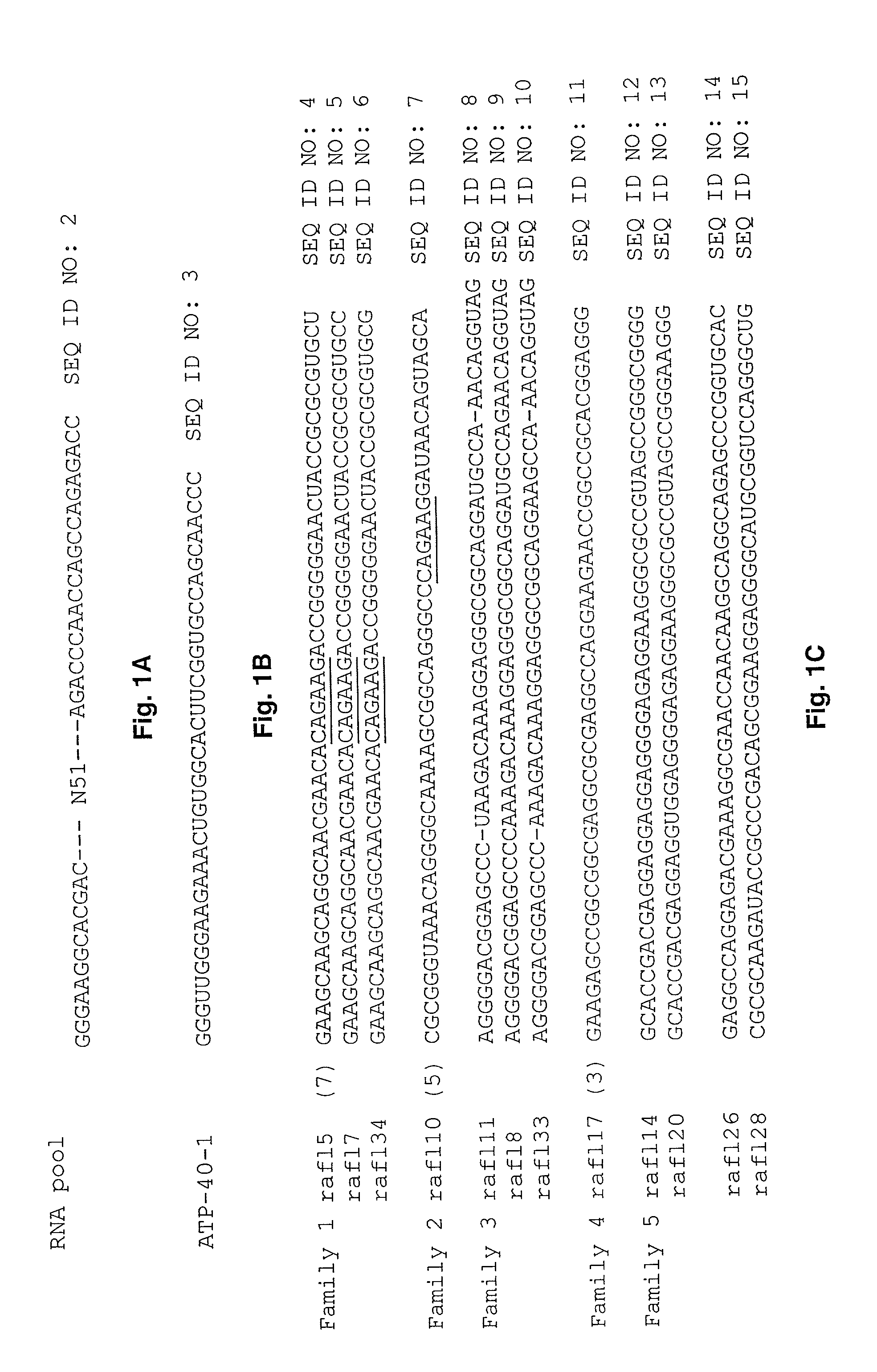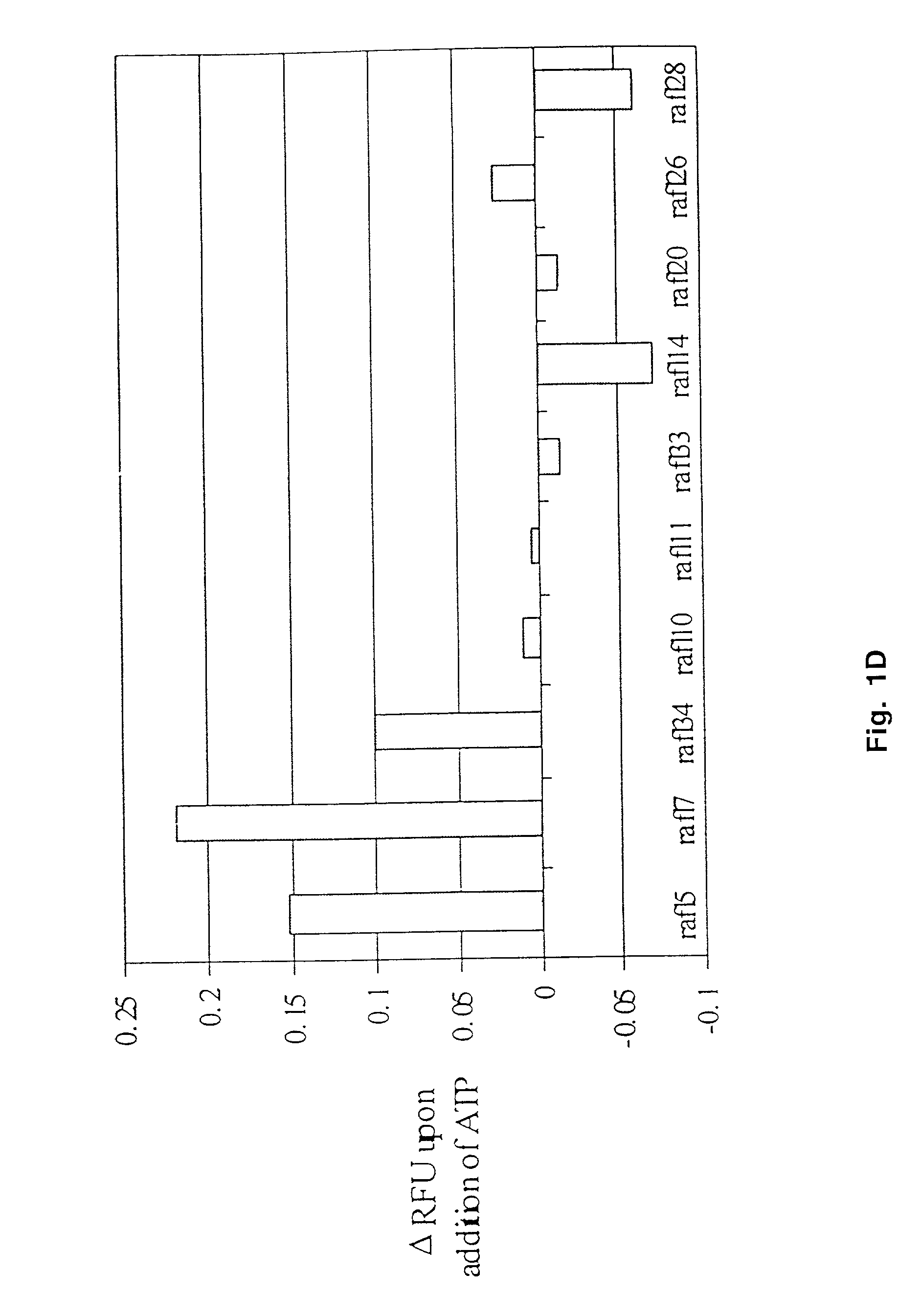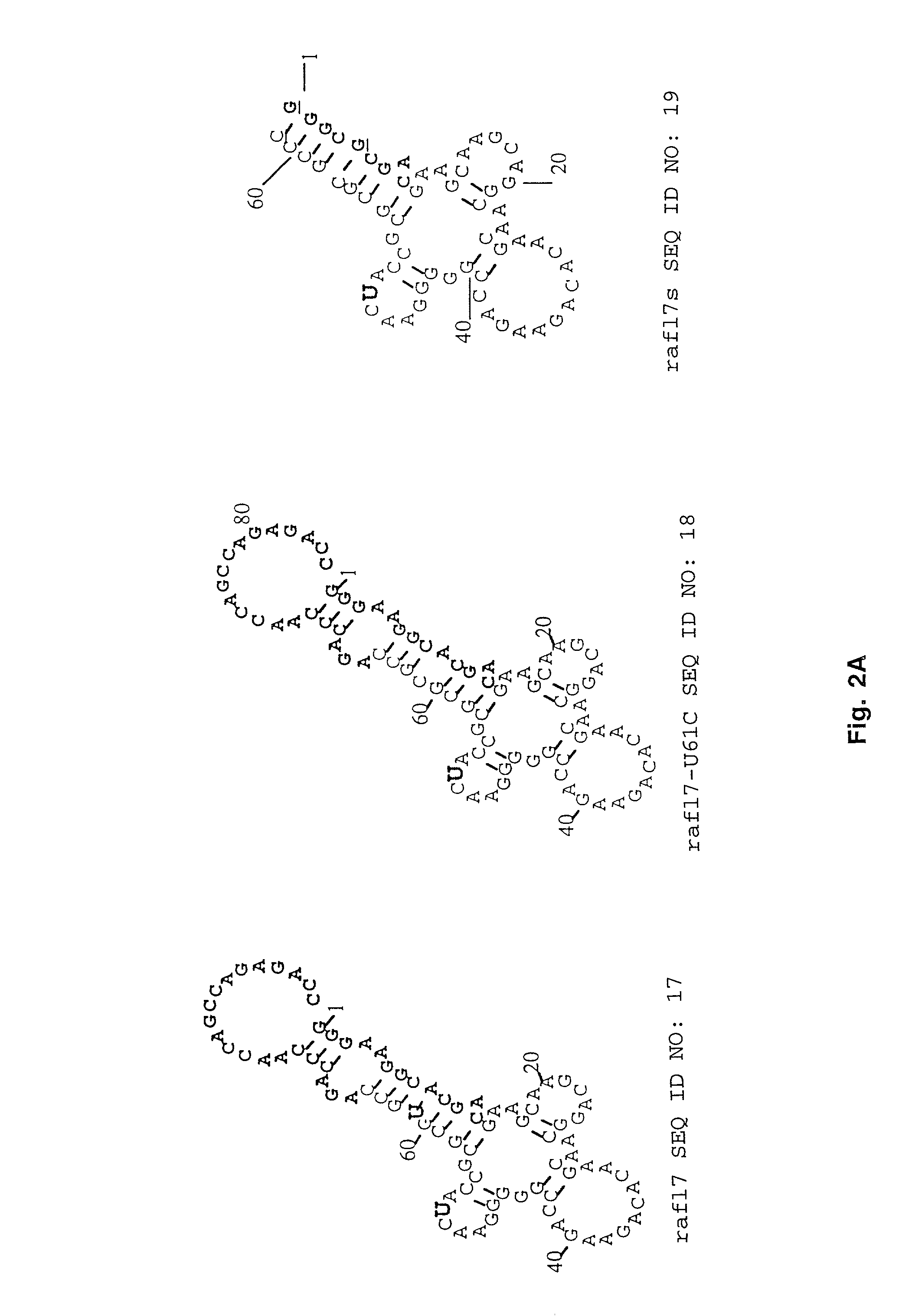In vitro selection of signaling aptamers
a signaling aptamer and in vitro selection technology, applied in the field of biochemistry and nucleic acid chemistry, can solve the problems of significant binding energy loss, difficult to adapt to biosensor applications, prior art deficient in the lack of in vitro selection methods for signaling aptamers
- Summary
- Abstract
- Description
- Claims
- Application Information
AI Technical Summary
Problems solved by technology
Method used
Image
Examples
example 1
[0046] Materials
[0047] Agarose affinity resins and the derivatives of ATP used to test the specificity of signaling aptamers were purchased from Sigma (St. Louis, Mo.). Fluorescein-12-UTP was purchased from Roche Diagnostics (Indianapolis, Ind.) The other fluorescent UTP conjugates, Cascade Blue-7-UTP, Texas Red-5-UTP, and Rhodamine Green-5-UTP, were purchased from Molecular Probes (Eugene, Oreg.).
example 2
[0048] Fluorescence Measurements
[0049] All fluorescence measurements were taken on a Series 2 Luminescence Spectrometer from SLM-AMINCO (Spectronic Instruments, Rochester, N.Y.). The experimental samples were excited at the excitation maxima for the corresponding dyes (.lambda..sub.ex 494 nm for fluorescein, 505 nm for rhodamine green, 400 nm for cascade blue), and fluorescence intensity was measured at the corresponding emission maximum (.lambda..sub.ex 521 nm for fluorescein, 533 for rhodamine green, and 420 for cascade blue). The 1 ml aptamer solutions were pipetted into a fluorimeter cell (Starna Cells, Inc., Atascadero, Calif. ) and ligand solutions of varying concentrations were added in small volumes.
example 3
[0050] Fluorescence Response Curves
[0051] Fluorescent aptamers (50 nM) were thermally equilibrated in binding buffer. On average, eight readings were taken to establish the initial fluorescence intensity of the aptamer. ATP solutions of varying concentrations in binding buffer were added in increments of 2 .mu.l. The change in fluorescence upon addition of ATP was plotted; in order to standardize the presentation of data, the fluorescence change at a given ATP concentration (F.sub.x-F.sub.0) was divided by the fluorescence change at saturating ATP concentrations (F.sub.100-F.sub.0). The data were fitted to the following equation using the program Kaleidograph (Synergy, Reading, Pa.): Y=AX / (X+B); where Y=the relative increase in fluorescence at a given ATP concentration, (F.sub.x-F.sub.0) / (F.sub.100-F- .sub.0); X=concentration of ATP; A=the increase in fluorescence at saturating ATP concentrations, (F.sub.100-F.sub.0); and B=the apparent dissociation constant value (concentration of ...
PUM
| Property | Measurement | Unit |
|---|---|---|
| mole ratio | aaaaa | aaaaa |
| volumes | aaaaa | aaaaa |
| temperature | aaaaa | aaaaa |
Abstract
Description
Claims
Application Information
 Login to View More
Login to View More - R&D
- Intellectual Property
- Life Sciences
- Materials
- Tech Scout
- Unparalleled Data Quality
- Higher Quality Content
- 60% Fewer Hallucinations
Browse by: Latest US Patents, China's latest patents, Technical Efficacy Thesaurus, Application Domain, Technology Topic, Popular Technical Reports.
© 2025 PatSnap. All rights reserved.Legal|Privacy policy|Modern Slavery Act Transparency Statement|Sitemap|About US| Contact US: help@patsnap.com



